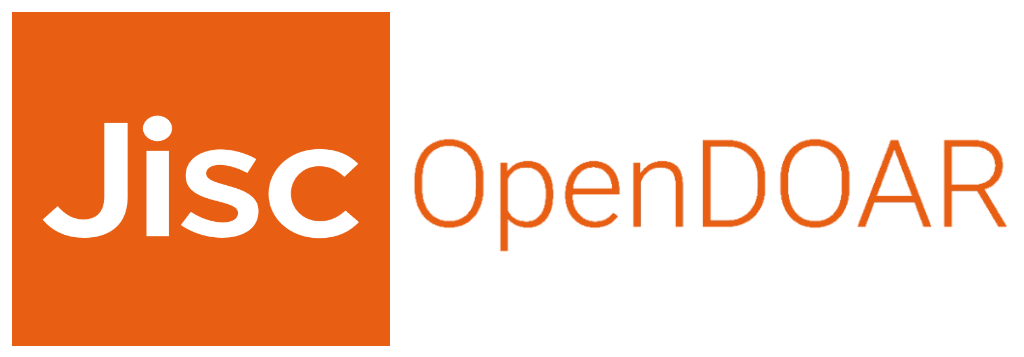Mostrar el registro sencillo del ítem
Diagnóstico y manejo del agente causal asociado a la pudrición del fruto de borojó (Alibertia patinoi (Cuatrec.) Delprete & CH Perss.), en postcosecha y bajo condiciones in vitro en el Distrito Especial de Buenaventura (Valle del Cauca), Colombia
| dc.rights.license | Atribución-NoComercial-CompartirIgual 4.0 Internacional (CC BY-NC-SA 4.0) | spa |
| dc.contributor.advisor | Arboleda, Carlos Emiro | |
| dc.contributor.author | Marín, Daniel Esteban | |
| dc.contributor.author | Delgado, Luis Fernando | |
| dc.date.accessioned | 2025-02-18T15:08:09Z | |
| dc.date.available | 2025-02-18T15:08:09Z | |
| dc.date.issued | 2024-05-08 | |
| dc.identifier.citation | Marín Ochoa D, E. Delgado Gutierrez L, F. Diagnóstico y manejo del agente causal asociado a la pudrición del fruto de borojó (Alibertia patinoi (Cuatrec.) Delprete & CH Perss.), en postcosecha y bajo condiciones in vitro en el Distrito Especial de Buenaventura (Valle del Cauca), Colombia [Tesis de pregrado Universidad del Pacifíco]. https://repositorio.unipacifico.edu.co/handle/unipacifico/3/workflow?workflowID=1293 | spa |
| dc.identifier.uri | https://repositorio.unipacifico.edu.co/handle/unipacifico/1028 | |
| dc.description.abstract | La pudrición del fruto en borojó ha sido una enfermedad que ha estado presente por décadas en las comunidades del pacífico colombiano donde se cultiva esta especie, durante este periodo de tiempo no se han realizados estudios concluyentes que permitieran identificar el patógeno asociado a esta enfermedad o plantear estrategias de control para esta patología. En este estudio se recolectaron muestras del patógeno de frutos maduros infectados en el corregimiento N°8 del distrito especial de Buenaventura (Valle del Cauca), con el fin de identificar por medio de características morfológicas, morfométricas y moleculares el patógeno asociado a esta enfermedad; así mismo, se realizaron experimentos de control de la enfermedad a base de soluciones de carbonato de sodio con concentraciones de 1%, 5% y 10% bajo condiciones in vitro e in vivo. Los análisis morfológicos y moleculares indicaron que el hongo en cuestión pertenece al género Talaromyces, pero no fueron concluyentes a la hora de identificar la especie. En cuanto a las estrategias de control, los tres tratamientos fueron efectivos para inhibir el desarrollo del hongo en condiciones in vitro, mientras que la concentración de carbonato de sodio al 10 % fue la que presentó mejor efectividad al ser aplicado directamente en frutos. | spa |
| dc.description.abstract | Fruit rot in borojó has been a disease that has been present for decades in the Colombian Pacific communities where this species is grown. During this period of time, no conclusive studies have been carried out to identify the associated pathogen to this disease or to propose control strategies for this pathology. In this study, samples of the pathogen were collected from infected ripe fruits in the corregimiento N°8 of the special district of Buenaventura (Valle delCauca), in order to identify by means of morphological, morphometric and molecular characteristics the pathogen associated with this disease; likewise, control experiments were carried out with sodium carbonate solutions with concentrations of 1%, 5% and 10% under in vitro and in vivo conditions. Morphological and molecular analyses indicated that the fungus in question belongs to the genus Talaromyces, but were not conclusive in identifying the species. As for control strategies, all three treatments were effective in inhibiting fungal development under in vitro conditions, while the 10% sodium carbonate concentration was the most effective when applied directly to fruit. | eng |
| dc.description.tableofcontents | INTRODUCCIÓN 1. OBJETIVOS 2. MARCO TEÓRICO 2.1. ASPECTOS GENERALES DEL BOROJÓ (Alibertia patinoi (Cuatrec.) Delprete & CH Perss.) 2.1.1. Origen 2.1.2. Condiciones ambientales favorables 2.1.3. Descripción morfológica 2.2. EL BOROJÓ COMO UNIDAD PRODUCTIVA 2.2.1. Técnicas de propagación 2.2.2. Siembra 2.2.4. Control de arvenses 2.2.5. Podas 2.2.6. Productividad 2.2.7. Cosecha y postcosecha 2.2.8. Plagas y enfermedades 2.2.9. Usos del borojó 2.3. POSIBLES AGENTES CAUSALES ASOCIADOS A LA PUDRICIÓN DEL FRUTO EN BOROJÓ 2.3.1. Género Penicillium 2.3.2. Penicillium digitatum (Pers.) Sacc. 2.3.3. Género Talaromyces 2.4. TÉCNICAS DE IDENTIFICACIÓN DE HONGOS FITOPATÓGENOS 2.4.1. Identificación morfológica 2.4.2. Identificación morfométrica 2.4.3. Identificación molecular 2.5. USO DE CARBONATOS Y BICARBONATOS DE SODIO COMO CONTROL DE HONGOS FITOPATÓGENOS 3. MATERIALES Y MÉTODOS 3.1. LOCALIZACIÓN 3.2. IDENTIFICACIÓN DEL AGENTE CAUSAL BASADOS EN CARACTERÍSTICAS MACROSCÓPICAS Y MICROSCÓPICAS 3.2.1. Caracterización morfológica 3.3. PRUEBAS DE PATOGENICIDAD 3.4. IDENTIFICACIÓN MOLECULAR DEL HONGO MEDIANTE ADNr Y ADNmt 3.4.1. Extracción de ADN 3.4.2. Amplificación de ADN y secuenciación 3.4.3. Alineación de secuencias y análisis filogenéticos 3.5. ESTRATEGIAS DE CONTROL A BASE DE CARBONATO DE SODIO 3.5.1. Experimento 1 3.5.2. Experimento 2 3.5.3. Experimento 3 3.6. PROCESAMIENTO Y ANÁLISIS DE DATOS 4. RESULTADOS 4.1. IDENTIFICACIÓN MORFOLÓGICA 4.1.1. Macromorfología 4.1.2. Micromorfología y Morfometría 4.2. IDENTIFICACIÓN MOLECULAR 4.3. ESTRATEGIAS DE CONTROL 5. DISCUSIÓN DE RESULTADOS 6. CONCLUSIONES 7. RECOMENDACIONES REFERENCIAS BIBLIOGRÁFICAS ANEXOS | spa |
| dc.format.extent | 60 p. | spa |
| dc.format.mimetype | application/pdf | spa |
| dc.language.iso | spa | spa |
| dc.rights | Al consultar y hacer uso de este recurso, está aceptando las condiciones de uso establecidas por los autores. | spa |
| dc.rights | Al consultar y hacer uso de este recurso, está aceptando las condiciones de uso establecidas por los autores. | spa |
| dc.rights.uri | https://creativecommons.org/licenses/by-nc-nd/4.0/ | spa |
| dc.subject.other | características moleculares | |
| dc.title | Diagnóstico y manejo del agente causal asociado a la pudrición del fruto de borojó (Alibertia patinoi (Cuatrec.) Delprete & CH Perss.), en postcosecha y bajo condiciones in vitro en el Distrito Especial de Buenaventura (Valle del Cauca), Colombia | spa |
| dc.type | Trabajo de grado - Pregrado | spa |
| dc.contributor.researchgroup | Diagnóstico y manejo integrado de plagas y enfermedades de plantas (DIMIPE) | spa |
| dc.description.degreelevel | Pregrado | spa |
| dc.description.degreename | Agrónomo(a) | spa |
| dc.description.researcharea | Protección de Cultivos | spa |
| dc.identifier.instname | Universidad del Pacifico | spa |
| dc.identifier.reponame | Repositorio Universidad Del Pacifico | spa |
| dc.identifier.repourl | https://repositorio.unipacifico.edu.co/ | spa |
| dc.publisher.place | Buenaventura, Colombia | spa |
| dc.publisher.program | Agronomía | spa |
| dc.relation.references | Agrios, G. N. (2005). Plant pathology. Elsevier. | spa |
| dc.relation.references | Aharoni, Y., Fallik, E., Copel, A., Gil, M., Grinberg, S. y Klein, JD (1997). El bicarbonato de sodio reduce el desarrollo de pudriciones poscosecha en los melones. Biología y tecnología poscosecha, 10 (3), 201-206. | spa |
| dc.relation.references | Andrianopoulos, A. (2002). Control of morphogenesis in the human fungal pathogen Penicillium marneffei, International Journal of Medical Microbiology, Volume 292, Issues 5–6, Pages 331-347, ISSN 1438-4221, https://doi.org/10.1078/1438-4221-00217. | spa |
| dc.relation.references | Anon. (1999). Baking soda and gray mold. Conference notes: ESA and APS joint meeting. IPM Practitioner. April. p. 10-11. | spa |
| dc.relation.references | Avis, T. J. (2007). Antifungal compounds that target fungal membranes: applications in plant disease control. Can. J. Plant Pathol. 29:323-329. | spa |
| dc.relation.references | Barkai-Golan, R. (2001). Postharvest diseases of fruits and vegetables: development and control. Elsevier. | spa |
| dc.relation.references | Barnet, L.H. and Hunter, B.B. (1972). Illustrated General of Imperfect Fungi. Third Edition. American Phytopathological Society. 241p. | spa |
| dc.relation.references | Bernal, A. M. R., & Sisnández, M. (2001). 4)Evaluación in vitro de diferentes productos químicos sobre el control de Penicillium digitatum Sacc. | spa |
| dc.relation.references | Calderón Correa, V., Berríos Centeno, J. J., & Centeno, H. J. (2006). Uso de bicarbonato de sodio para el control de Mildiu Polvoriento causado por Sphaerotheca Fulinginae en el cultivo del Melón (Doctoral dissertation). | spa |
| dc.relation.references | Carris, L. M., Cr Little, & Cm Stiles. (2012). Introduction to Fungi. The Plant Health Instructor. DOI: 10.1094/PHI-I-2012-0426-01. Phytopathology News. | spa |
| dc.relation.references | Centro Nacional De Información Biotecnológica – NCBI (2024). [Internet]. Bethesda (MD): Biblioteca Nacional de Medicina (EE. UU.), Centro Nacional de Información Biotecnológica; 1988. https://www.ncbi.nlm.nih.gov/ | spa |
| dc.relation.references | Ceponis, M.J., Cappellini, R.A., Lightner, G.W., (1986). Disorders in citrus shipments to the New York market 1972–1984. Plant Dis. 70, 1162–1165 | spa |
| dc.relation.references | Cifuentes, E. L. A., & Espinosa, P. A. (2008). Aislamiento e identificación de hongos filamentosos de muestras de suelo de los páramos de Guasca y Cruz Verde. Universidad Javeriana. Bogotá, Colombia. 204pp. | spa |
| dc.relation.references | Cordova, J (S.F) El cultivo de borojó. Repositorio Agrosavia. | spa |
| dc.relation.references | Corporación De Promoción De Exportaciones E Inversiones (CORPEI), 2005. Naranjillas, Pitahaya, Arazá y Borojó con Agroquímicos. | spa |
| dc.relation.references | Davide, S.; Angelo, G. and Maria, L. G. (2004). Control of Penicillium expansum and Botrytis cinerea on apple combining a biocontrol agent with hot water dipping and acibenzolar- S-methyl, baking soda, or ethanol application. Postharvest Biol. Technol. 33:141-151. | spa |
| dc.relation.references | Deliopoulos, T.; Kettlewell, P. S. and Hare, M. C. (2010). Fungal disease suppression by inorganic salts: a review. Crop Protection. 29(10):1059-1075. | spa |
| dc.relation.references | Dijksterhuis, J. (2007). Heat resistant ascospores. In: Food mycology. A multifaceted approach to fungi and food, CRC Press, Boca Raton: 101–117. | spa |
| dc.relation.references | Eckert, J.W., Eaks, I.L., (1989). Postharvest disorders and diseases of citrus fruits. In: Reuter, W., Calavan, E.C., Carman, G.E. (Eds.), The Citrus Industry. DANR. University of California Press, Berkeley, CA, USA, pp. 179–260. | spa |
| dc.relation.references | Frisvad, J. C., Yilmaz, N., Thrane, U., Rasmussen, K. B., Houbraken, J., & Samson, R. A. (2013). Talaromyces atroroseus, a new species efficiently producing industrially relevant red pigments. PloS one, 8(12), e84102. | spa |
| dc.relation.references | Giraldo, C., Rengigo, L., Aguilar, E., Gaviria, D. & Alegría, A. (2004). Determinación del sexo en borojó (Borojoa patinoi, Cuatrecasas) mediante marcadores moleculares, Revista Colombiana de Biotecnología. | spa |
| dc.relation.references | Gohel, V., Singh, A., Vimal, M., Ashwini, P., & Chhatpar, H. S. (2006). Bioprospecting and antifungal potential of chitinolytic microorganisms. African Journal of Biotechnology, 5(2), 54-72. | spa |
| dc.relation.references | Granados - Montero, M. D. M. (2018). Identificación morfológica de hongos fitopatógenos: taller básico. | spa |
| dc.relation.references | uédez, C., Cañizalez, L., Castillo, C., Olivar, R. Y Maffei, M. (2010). Alternativas para el control de hongos postcosecha en naranjas valencianas (Citrus sinensis). Revista de la Sociedad Venezolana de Microbiología, 30 (1), 43-47. | spa |
| dc.relation.references | Hasan, M. F.; Mahmud, T. M. M.; Kadir, J.; Ding, P. and Zaidul, I. S. M. (2012). Sensitivity of Colletotrichum gloeosporioides to sodium bicarbonate on the development of anthracnose in papaya (Carica papaya L. cv. Frangi). Aus. J. Crop Sci. 6(1):17-22 | spa |
| dc.relation.references | Herbario Virtual (2023). Moho verde en cítricos (Penicillium digitatum). Cátedra de fitopatología. Facultad de Agronomía de la Universidad de Buenos Aires. https://herbariofitopatologia.agro.uba.ar | spa |
| dc.relation.references | Hien, T. V., Loc, P. P., Hoa, N. T. T., Duong, N. M., Quang, V. M., Mcneil, M. M., ... & Ashford, D. A. (2001). First cases of disseminated penicilliosis marneffei infection among patients with acquired immunodeficiency syndrome in Vietnam. Clinical Infectious Diseases, 32(4), e78-e80. | spa |
| dc.relation.references | Horré, R., Gilges, S., Breig, P., Kupfer, B., De Hoog, G. S., Hoekstra, E., & Schaal, K. P. (2001). Case report. Fungaemia due to Penicillium piceum, a member of the Penicillium marneffei complex. Mycoses, 44 (11‐12), 502-504. | spa |
| dc.relation.references | Houbraken J, Vries Rp De, Samson Ra (2014). Modern taxonomy of biotechnologically important Aspergillus and Penicillium species. Advances in Applied Microbiology 86: 199–249. | spa |
| dc.relation.references | Houbraken, J., Kocsubé, S., Visagie, C. M., Yilmaz, N., Wang, X. C., Meijer, M., & Frisvad, J. C. (2020). Classification of Aspergillus, Penicillium, Talaromyces and related genera (Eurotiales): An overview of families, genera, subgenera, sections, series and species. Studies in mycology, 95, 5-169. | spa |
| dc.relation.references | Ilhan, K.; Arslan, U. And Karabulut, O. A. (2006). The effect of sodium bicarbonate alone or in combination with a reduced dose of tebuconazole on the control of apple scab. Crop Protec. 25:963-967. | spa |
| dc.relation.references | Jamar, L., Lefrancq, B., & Lateur, M. (2007). Control of apple scab (Venturia inaequalis) with bicarbonate salts under controlled environment. Journal of Plant Diseases and Protection, 221-227. | spa |
| dc.relation.references | Juárez-Santillán, L. F., Tejada-Tapia, Y., Reyes-Gómez, J. P., De Jesús López-Ceballos, J., Martínez-Aguilar, K., & Armenta-Barrios, J. A. (2022). Peróxido de hidrógeno y bicarbonato de sodio para control de gomosis en el cultivo de naranja Valencia. Veracruz. REMCID, 1. | spa |
| dc.relation.references | Kalra, R., Conlan, X. A., & Goel, M. (2020). Fungi as a potential source of pigments: Harnessing filamentous fungi. Frontiers in Chemistry, 8, 369 | spa |
| dc.relation.references | Karabulut, O. A.; Arslan, U.; Ilhan, K. and Yagdi, K. (2006). The effect of sodium bicarbonate alone or in combination with a reduced rate of mancozeb on the control of leaf rust Puccinia triticina in wheat. Can. J. Plant Pathol. 28: 484-488. | spa |
| dc.relation.references | Lobuglio, K. F., Pitt, J. I., & Taylor, J. W. (1993). Phylogenetic analysis of two ribosomal DNA regions indicates multiple independent losses of a sexual Talaromyces state among asexual Penicillium species in subgenus Biverticillium. Mycologia, 85(4), 592-604. | spa |
| dc.relation.references | Lopez, J. (2000). Manejo de frutales de climas medio y cálido. Corporación para el desarrollo micro empresarial. http://bibliotecadigital.agronet.gov.co/bitstream/11348/4092/1/071.pdf | spa |
| dc.relation.references | Lurá, M., Benítez, J., Jáuregui, S., & Gónzalez, A. (2003). Evaluación de diferentes técnicas de extracción del ADN de hongos filamentosos. R Fabicib, 7, 37-44. | spa |
| dc.relation.references | Maeda, R. N., Barcelos, C. A., Santa Anna, L. M. M., & Pereira Jr, N. (2013). Cellulase production by Penicillium funiculosum and its application in the hydrolysis of sugar cane bagasse for second generation ethanol production by fed batch operation. Journal of Biotechnology, 163(1), 38-44. | spa |
| dc.relation.references | Mapari, S. A., Meyer, A. S., Thrane, U., & Frisvad, J. C. (2009). Identification of potentially safe promising fungal cell factories for the production of polyketide natural food colorants using chemotaxonomic rationale. Microbial cell factories, 8, 1-15 | spa |
| dc.relation.references | Medina, J. (2007). Respuesta cultural y morfogenética de tres explantes de borojó (Borojoa Patinoi CUATRECASAS). Revista institucional Universidad Tecnológica del Chocó. | spa |
| dc.relation.references | Mosquera, J. & Arenas, E. (1995). El borojó, Cultivo Agroforestal del Chocó Fundamentos para el desarrollo sostenible. CODECHOCÓ, Chocó, Colombia. | spa |
| dc.relation.references | Mousa, W. K., & Raizada, M. N. (2013). The diversity of anti-microbial secondary metabolites produced by fungal endophytes: an interdisciplinary perspective. Frontiers in microbiology, 4, 65. | spa |
| dc.relation.references | Müller, I. A., & Anchorena, R. (2001). Prácticas de manejo en poscosecha de la fruta cítrica para mejorar su calidad exportable. INIA Serie Actividades de Difusión. | spa |
| dc.relation.references | N. Yilmaz, C.M. Visagie, J. Houbraken, J.C. Frisvad, R.A. Samson (2014). Polyphasic taxonomy of the genus Talaromyces, Studies in Mycology, Volume 78, Pages 175-341, ISSN 0166- 0616, https://doi.org/10.1016/j.simyco.2014.08.001. | spa |
| dc.relation.references | Naraghi, L., Heydari, A., Rezaee, S., & Razavi, M. (2012). Biocontrol agent Talaromyces flavus stimulates the growth of cotton and potato. Journal of Plant Growth Regulation, 31, 471-477. | spa |
| dc.relation.references | Naraghi, L., Heydari, A., Rezaee, S., Razavi, M., & Afshari-Azad, H. (2010). Biological control of Verticillium wilt of greenhouse cucumber by Talaromyces flavus. Phytopathologia Mediterranea, 49(3), 321-329. | spa |
| dc.relation.references | Narikawa T, Shinoyama H, Fujii T (2000). A β-rutinosidase from Penicillum rugulosum IFO 7242 that is a peculiar flavonoid glycosidase. Bioscience, Biotechnology and Biochemistry 64: 1317–1319. | spa |
| dc.relation.references | Nutriward. (2005). El borojó. | spa |
| dc.relation.references | Palou L, Smilanick J, Usall J, Viñas J. (2001). Control of postharvest blue and green molds of oranges by hot water, sodium carbonate and sodium bicarbonate. Plant Dis., 85:371-6. | spa |
| dc.relation.references | 53 Zhang, C., Xu, C., Li, J., Yuan, Q., Liu, C., Wang, T., ... & Yuan, D. (2017). Molecular Authentication of Panax japonicus through Development of Sequence Characterized Amplified Regions (SCAR) Marker. Lat. Am. J. Pharm, 36(3), 431-6. | spa |
| dc.rights.accessrights | info:eu-repo/semantics/openAccess | spa |
| dc.subject.proposal | Talaromyces | spa |
| dc.subject.proposal | patología | spa |
| dc.subject.proposal | in vitro | spa |
| dc.subject.proposal | in vivo | spa |
| dc.subject.proposal | características morfológicas | spa |
| dc.subject.proposal | características morfométricas | spa |
| dc.subject.proposal | características moleculares | spa |
| dc.subject.proposal | Talaromyces | eng |
| dc.subject.proposal | pathology | eng |
| dc.subject.proposal | in vitro | eng |
| dc.subject.proposal | in vivo | eng |
| dc.subject.proposal | morphological characteristics | eng |
| dc.subject.proposal | morphometric characteristics | eng |
| dc.subject.proposal | molecular characteristics | eng |
| dc.subject.unesco | características morfométricas | |
| dc.subject.unesco | patología | |
| dc.type.coar | http://purl.org/coar/resource_type/c_7a1f | spa |
| dc.type.coarversion | http://purl.org/coar/version/c_ab4af688f83e57aa | spa |
| dc.type.content | Text | spa |
| dc.type.driver | info:eu-repo/semantics/bachelorThesis | spa |
| dc.type.redcol | http://purl.org/redcol/resource_type/TP | spa |
| dc.type.version | info:eu-repo/semantics/acceptedVersion | spa |
| dc.rights.coar | http://purl.org/coar/access_right/c_abf2 | spa |
| dc.contributor.jury | Diaz Dagua, Carlos Arturo | |
| dc.contributor.jury | Murillo Obregron, Claudia Melissa |
Ficheros en el ítem
Este ítem aparece en la(s) siguiente(s) colección(ones)
-
AB. Agronomía [104]









